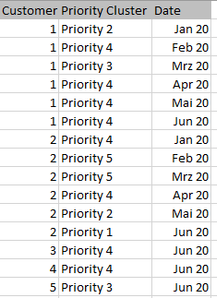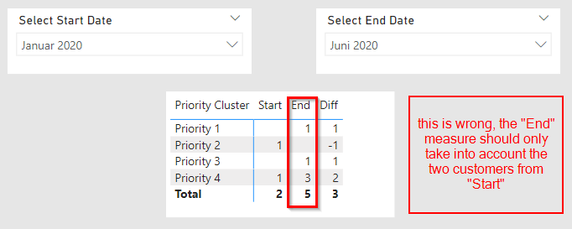Jumpstart your career with the Fabric Career Hub
Find everything you need to get certified on Fabric—skills challenges, live sessions, exam prep, role guidance, and a 50 percent discount on exams.
Get started- Power BI forums
- Updates
- News & Announcements
- Get Help with Power BI
- Desktop
- Service
- Report Server
- Power Query
- Mobile Apps
- Developer
- DAX Commands and Tips
- Custom Visuals Development Discussion
- Health and Life Sciences
- Power BI Spanish forums
- Translated Spanish Desktop
- Power Platform Integration - Better Together!
- Power Platform Integrations (Read-only)
- Power Platform and Dynamics 365 Integrations (Read-only)
- Training and Consulting
- Instructor Led Training
- Dashboard in a Day for Women, by Women
- Galleries
- Community Connections & How-To Videos
- COVID-19 Data Stories Gallery
- Themes Gallery
- Data Stories Gallery
- R Script Showcase
- Webinars and Video Gallery
- Quick Measures Gallery
- 2021 MSBizAppsSummit Gallery
- 2020 MSBizAppsSummit Gallery
- 2019 MSBizAppsSummit Gallery
- Events
- Ideas
- Custom Visuals Ideas
- Issues
- Issues
- Events
- Upcoming Events
- Community Blog
- Power BI Community Blog
- Custom Visuals Community Blog
- Community Support
- Community Accounts & Registration
- Using the Community
- Community Feedback
Earn a 50% discount on the DP-600 certification exam by completing the Fabric 30 Days to Learn It challenge.
- Power BI forums
- Forums
- Get Help with Power BI
- Desktop
- Re: I need help with writing a DAX measure for a k...
- Subscribe to RSS Feed
- Mark Topic as New
- Mark Topic as Read
- Float this Topic for Current User
- Bookmark
- Subscribe
- Printer Friendly Page
- Mark as New
- Bookmark
- Subscribe
- Mute
- Subscribe to RSS Feed
- Permalink
- Report Inappropriate Content
I need help with writing a DAX measure for a kind of "cohort" analysis
Hello,
first I'm new here, I didn't find an opportunity to attach a pbix file, how is this possible?
My problem is the following: I have a data table, a simplified version looks like this.
Now I would like to have two filters in Power BI, I thought about two disconnected tables. They should allow to set a "Start Date" and an "End Date". Then I want to see, how the Customers have developed between Start and End date. The tricky part is, that I only want to compare the customers, that are available in the selected Start Date. The next screenshot shows a wrong result, but basically this is how I want to display it in Power BI:
The forumla for "End" is currently:
End =
VAR EndDate = MIN('End Date'[Date])
Return CALCULATE(DISTINCTCOUNT(Data[Customer]),FILTER(Data,Data[Date]=EndDate))
Now I would like to have a formula, which takes only the 2 customers selected for the Start (this is customer nr 1 and 2), and shows what the current Priority for these two customers is at the "End" Date. The right result would be (as customer 2 was Priority 4 in Jan 2000 and moved to Priority 1 in Jun 2000):
Would be really great to get some help here, I am already despairing and trying to solve the problem for a long time
Solved! Go to Solution.
- Mark as New
- Bookmark
- Subscribe
- Mute
- Subscribe to RSS Feed
- Permalink
- Report Inappropriate Content
Hi @Landon1 ,
I suggest you to try this code to create a measure.
End =
VAR StartDate =
MIN ( 'Start Date'[Date] )
VAR EndDate =
MIN ( 'End Date'[Date] )
VAR LIST =
CALCULATETABLE (
VALUES ( Data[Customer] ),
FILTER ( ALL ( Data ), Data[Date] = StartDate )
)
RETURN
CALCULATE (
DISTINCTCOUNT ( Data[Customer] ),
FILTER ( Data, Data[Date] = EndDate && Data[Customer] IN LIST )
)Result is as below.
Best Regards,
Rico Zhou
If this post helps, then please consider Accept it as the solution to help the other members find it more quickly.
- Mark as New
- Bookmark
- Subscribe
- Mute
- Subscribe to RSS Feed
- Permalink
- Report Inappropriate Content
Hi @Landon1 ,
I suggest you to try this code to create a measure.
End =
VAR StartDate =
MIN ( 'Start Date'[Date] )
VAR EndDate =
MIN ( 'End Date'[Date] )
VAR LIST =
CALCULATETABLE (
VALUES ( Data[Customer] ),
FILTER ( ALL ( Data ), Data[Date] = StartDate )
)
RETURN
CALCULATE (
DISTINCTCOUNT ( Data[Customer] ),
FILTER ( Data, Data[Date] = EndDate && Data[Customer] IN LIST )
)Result is as below.
Best Regards,
Rico Zhou
If this post helps, then please consider Accept it as the solution to help the other members find it more quickly.






